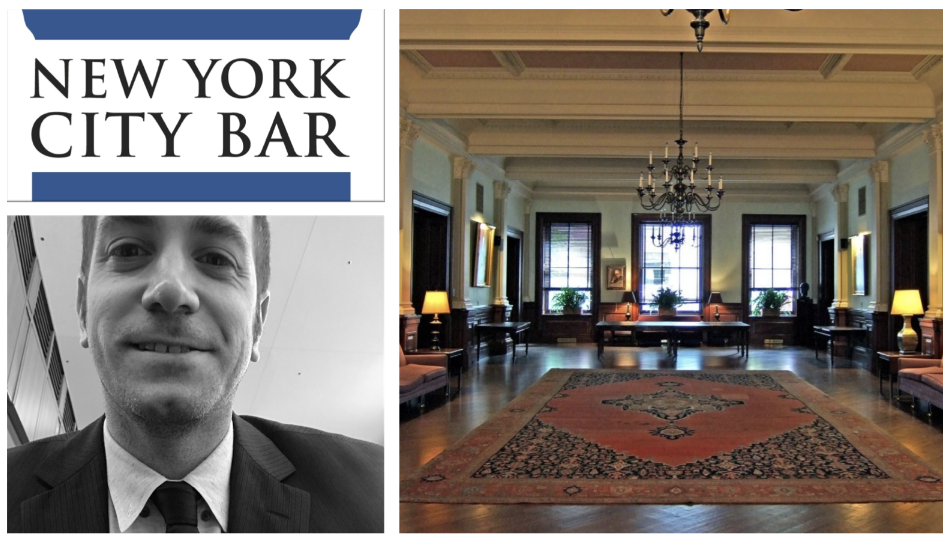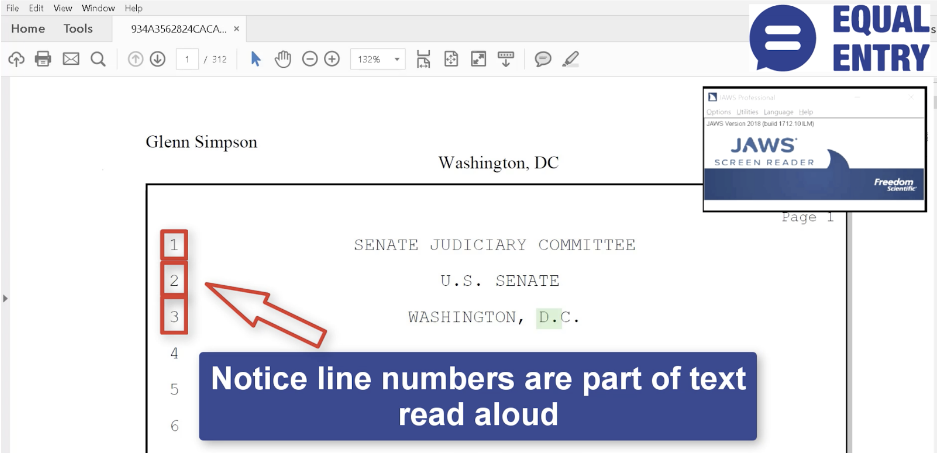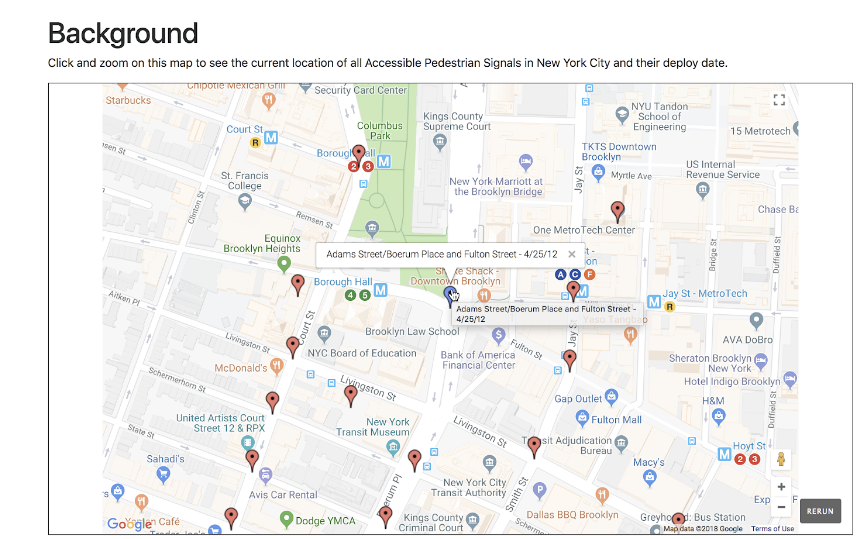
I presented to the Disability Law Committee of the New York City Bar Association on April 19th, 2018. The Disability Law Committee was interested in gaining an understanding of common issues that people with disabilities encounter with technology. The State of New York is busy with Americans with Disabilities Act Title III Lawsuits, “having almost doubled its 543 lawsuits filed in 2016 to 1023 in 2017.”
I outlined three specific challenges facing managers of digital technology:
- A web site or application can fundamentally change from one day to the next based on one developer’s code check-in, or one content author’s update.
- Organizations have massive amounts of individual web pages, electronic documents, and multimedia hosted across a wide array of digital locations.
- Many technologies are built on top of inaccessible third-party technologies.
I demonstrated Freedom Scientific JAWS reading a court transcript document as a PDF file. I showed that the document had an incomprehensible document title and repeating footers on each page. I also showed that each numbered line of the transcript was inserted into the reading order of the document content, making it much more difficult and time-consuming to read.

I then showed how any company that follows the advice from Adding a Google Map with a Marker to Your Website would have a visualization on their website that does not support keyboard access, or access to a screen reader. I demonstrated how VoiceOver, the screen reader that comes with the Mac Operating System, was also unable to get information from the individual data points displayed on the map.

In closing, I showed how an automated tool could be used to identify accessibility issues related to the Web Content Accessibility Guidelines 2.0. I used Deque’s aXe Toolbar on the homepage of the US Environmental Protection Agency.
In my quick example, I demonstrated that there were 132 violations found on the page with an additional 70 issues needing review. I discussed how automated tools can be helpful in identifying risks, but that they do not do an excellent job of understanding the impact of a specific accessibility issue for an end user of a technology.

Jill Micheli connected me with the organizers of this event, and I appreciated the opportunity to converse with an audience of lawyers and judges whose perspectives and work will shape the future of accessibility implementations. As the number of lawsuits relating to accessibility continues to increase, I believe it is crucial for technologists and lawyers to work together to bring clarity to the measurements and expectations of technology accessibility.